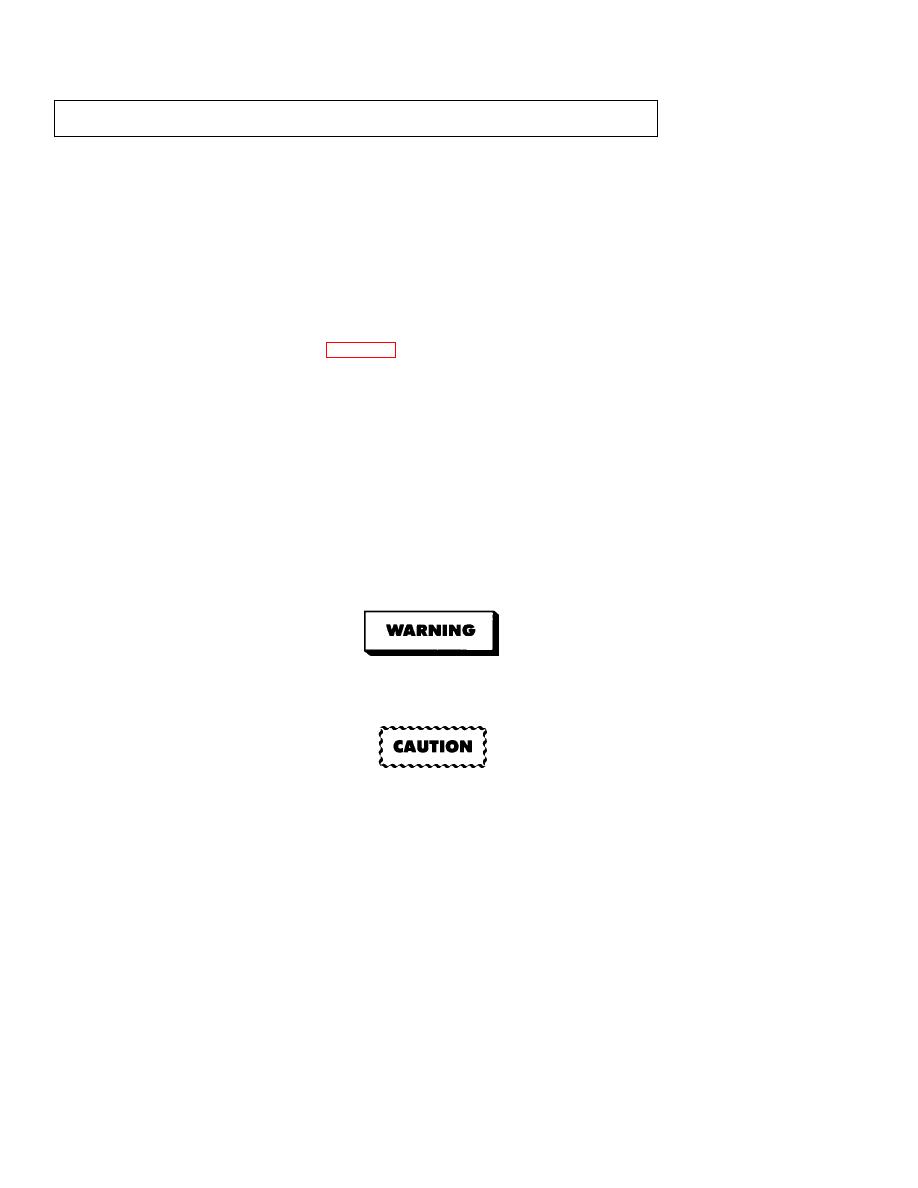 |
|||
|
|
|||
|
|
|||
| ||||||||||
|
|
 TM 9-2320-364-34-1
2-9. INTRODUCTION TO LOGIC TREE TROUBLESHOOTING (CONT).
(2)
A test page is always a right-hand page, facing the logic tree page on the left. The test provides detailed
instructions for testing the first component listed in the POSSIBLE PROBLEMS box. This test will also
provide an answer for the question in the middle column. Note the arrow connecting the test on the right-
hand page to the REASON FOR QUESTION. When possible, illustrations are included to provide visual
details. Warnings, cautions, and notes contain additional information for testing.
b.
How to Begin Troubleshooting.
(1)
Determine the symptom or condition that indicates a problem or failure. Troubleshooting is divided into
symptoms peculiar to a truck system or component, for example: air system or engine. Refer to the
Troubleshooting Fault Index (Table 2-4). Follow DDEC II and DDEC III/IV Troubleshooting BEFORE
going to Engine Troubleshooting.
(2)
Go to the referenced page to begin troubleshooting. Open the manual flat so both the left-hand and right-
hand pages are displayed before you. The information on both pages is important to resolve the problem
or failure. However, the experienced technician can follow the left-hand page instructions and refer to
the right-hand page when necessary.
(3)
Follow the Diagnostic Procedure. Answer question no. 1 on the left-hand page and follow the YES or NO
path to either the remedy or the next question. If necessary, look on the right-hand page for test
instructions and illustrations.
(4)
Observe warnings, cautions and notes. The formatting and symbols used in this manual for warnings,
cautions and notes are as follows:
This is the symbol for a warning statement. If you see the word WARNING above a question
on the left-hand page, look on the right-hand page for the text of the message. WARNINGs
describe a situation which could cause severe injury or death to personnel.
This is the symbol for a caution statement. If you see the word CAUTION above a question on
the left-hand page, look on the right-hand page for the text of the message. CAUTIONs
describe a situation which could cause damage to equipment.
NOTE
This is the symbol for a note. Notes are located directly above the test to which they refer.
Notes provide additional information for performing a test.
c.
Abbreviations and Commonly Used Terms.
(1)
A/D - Analog to Digital: The computer inside the DDEC ECM uses an A/D converter to convert a sensor
voltage into a number with which the computer can work.
(2)
Active Codes - These are the codes that currently keep the Check Engine Light on. They can only be read
using the Diagnostic Data Reader.
(3)
BAT - Battery.
2-36
|
|
Privacy Statement - Press Release - Copyright Information. - Contact Us |